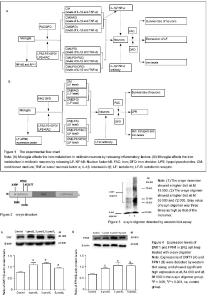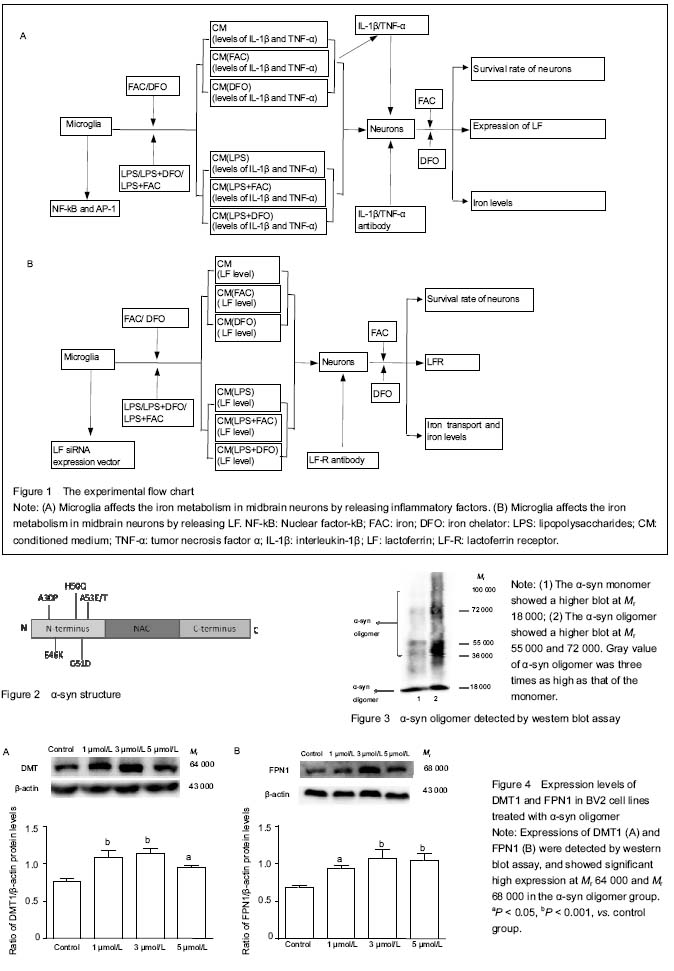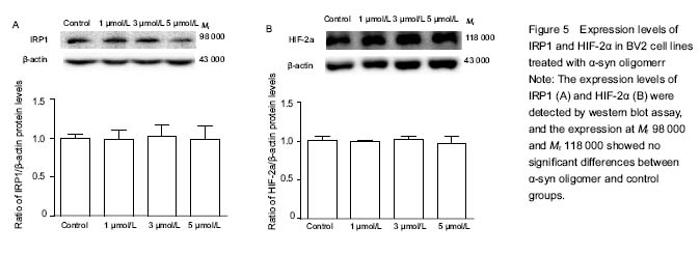| [1] Mirza B, Hadberg H, Thomsen P, et al. The absence of reactive astrocytosis is indicative of a unique inflammatory process in Parkinson’s disease. Neuroscience. 2000;95: 425-432.[2] Zhang X, Surguladze N, Slagle-Webb B, et al. Cellular iron status influences the functional relationship between microglia and oligodendrocytes. Glia. 2006;54(8):795-804.[3] Wu DC, Jackson-Lewis V, Vila M, et al. Blockade of microglial activation is neuroprotective in the 1-methyl-4-phenyl-1,2,3,6-tetrahydropyridine mouse model of Parkinson disease. J Neurosci. 2002;22(5):1763-1771. [4] Peng J, Stevenson FF, Oo ML, et al. Iron-enhanced paraquat-mediated dopaminergic cell death due to increased oxidative stress as a consequence of microglial activation. Free Radic Biol Med. 2009;46(2):312-320.[5] O'Brien-Ladner AR, Nelson SR, Murphy WJ, et al. Iron is a regulatory component of human IL-1beta production. Support for regional variability in the lung. Am J Respir Cell Mol Biol. 2000;23(1):112-119.[6] Helyar L, Sherman AR. Iron deficiency and interleukin 1 production by rat leukocytes. Am J Clin Nutr. 1987;46(2): 346-352.[7] Smirnov IM, Bailey K, Flowers CH, et al. Effects of TNF-alpha and IL-1beta on iron metabolism by A549 cells and influence on cytotoxicity. Am J Physiol. 1999;277(2 Pt1):L257-263.[8] Eisenstein RS, Tuazon PT, Schalinske KL, et al. Iron-responsive element-binding protein. Phosphorylation by protein kinase C. J Biol Chem. 1993;268:27363-27370.[9] Schalinske KL, Eisenstein RS. Phosphorylation and activation of both iron regulatory proteins 1 and 2 in HL-60 cells. J Biol Chem. 1996;271:7168-7176.[10] Kiemer AK, Förnges AC, Pantopoulos K, et al. ANP-induced decrease of iron regulatory protein activity is independent of HO-1 induction. Am J Physiol Gastrointest Liver Physiol. 2004;287:G518-6526.[11] An L, Sato H, Konishi Y, et al. Expression and localization of lactotransferrin messenger RNA in the cortex of Alzheimer's disease. Neurosci Lett. 2009;452(3):277-280.[12] Leveugle B, Faucheux BA, Bouras C, et al. Cellular distribution of the iron-binding protein lactotransferrin in the mesencephalon of Parkinson's disease cases. Acta Neuropathol. 1996;91(6):566-572.[13] Wang J, Jiang H, Xie JX. Time dependent effects of 6-OHDA lesions on iron level and neuronal loss in rat nigrostriatal system. Neurochem Res. 2004;29(12): 2239-2243.[14] Zhang S, Wang J, Song N, et al. Up-regulation of divalent metal transporter1 is involved in 1-methyl-4-phenylpyridinium (MPP(+))-induced apoptosis in MES23.5 cells. Neurobiol Aging. 2009;30(9):1466-1476.[15] Wang J, Jiang H, Xie JX. Ferroportin1 and hephaestin are involved in the nigral iron accumulation of 6-OHDA- lesioned rats. Eur J Neurosci. 2007;25(9):2766-2772. [16] Xu HM, Jiang H, Wang J, et al. Over-expressed human divalent metal transporter 1 is involved in iron accumulation in MES23.5 cells. Neurochem Int. 2008;52(6):1044-1051.[17] Song N, Wang J, Jiang H, et al. Ferroportin 1 but not hephaestin contributes to iron accumulation in a cell model of Parkinson's disease. Free Radic Biol Med. 2010;48(2): 332-341.[18] Youdim MB, Fridkin M, Zheng H. Bifunctional drug derivatives of MAO-B inhibitor rasagiline and iron chelator VK-28 as a more effective approach to treatment of brain ageing and ageing neurodegenerative diseases. Mech Ageing Dev. 2005;126(2):317-326.[19] Hirsch EC. Altered regulation of iron transport and storage in Parkinson's disease. J Neural Transm Suppl. 2006;(71): 201-204. |



